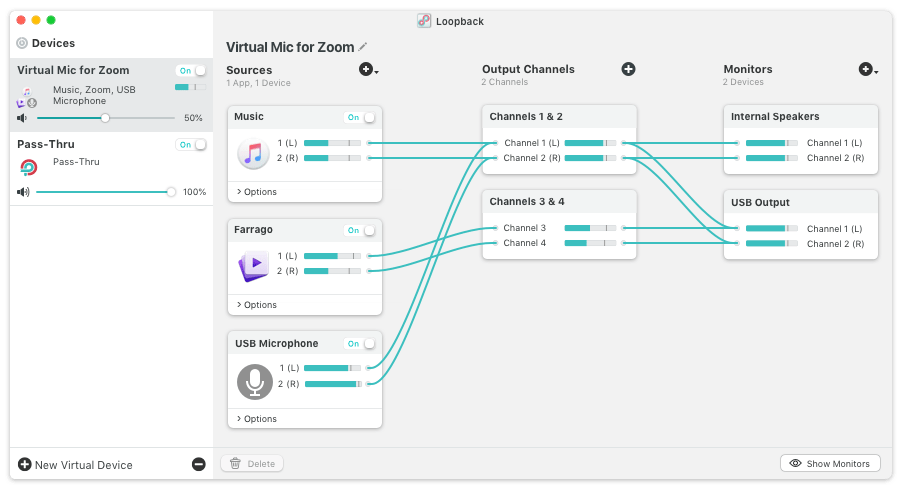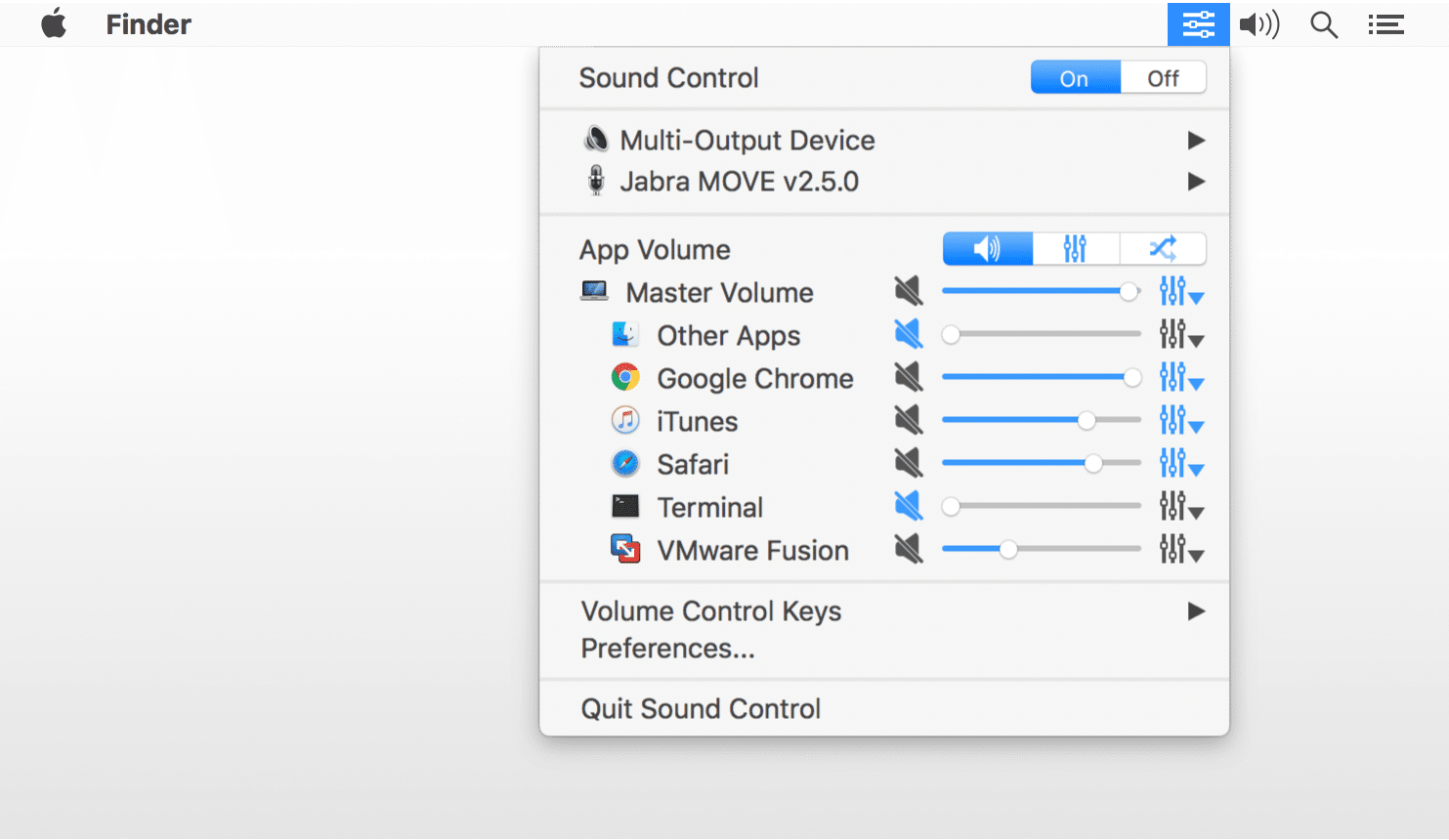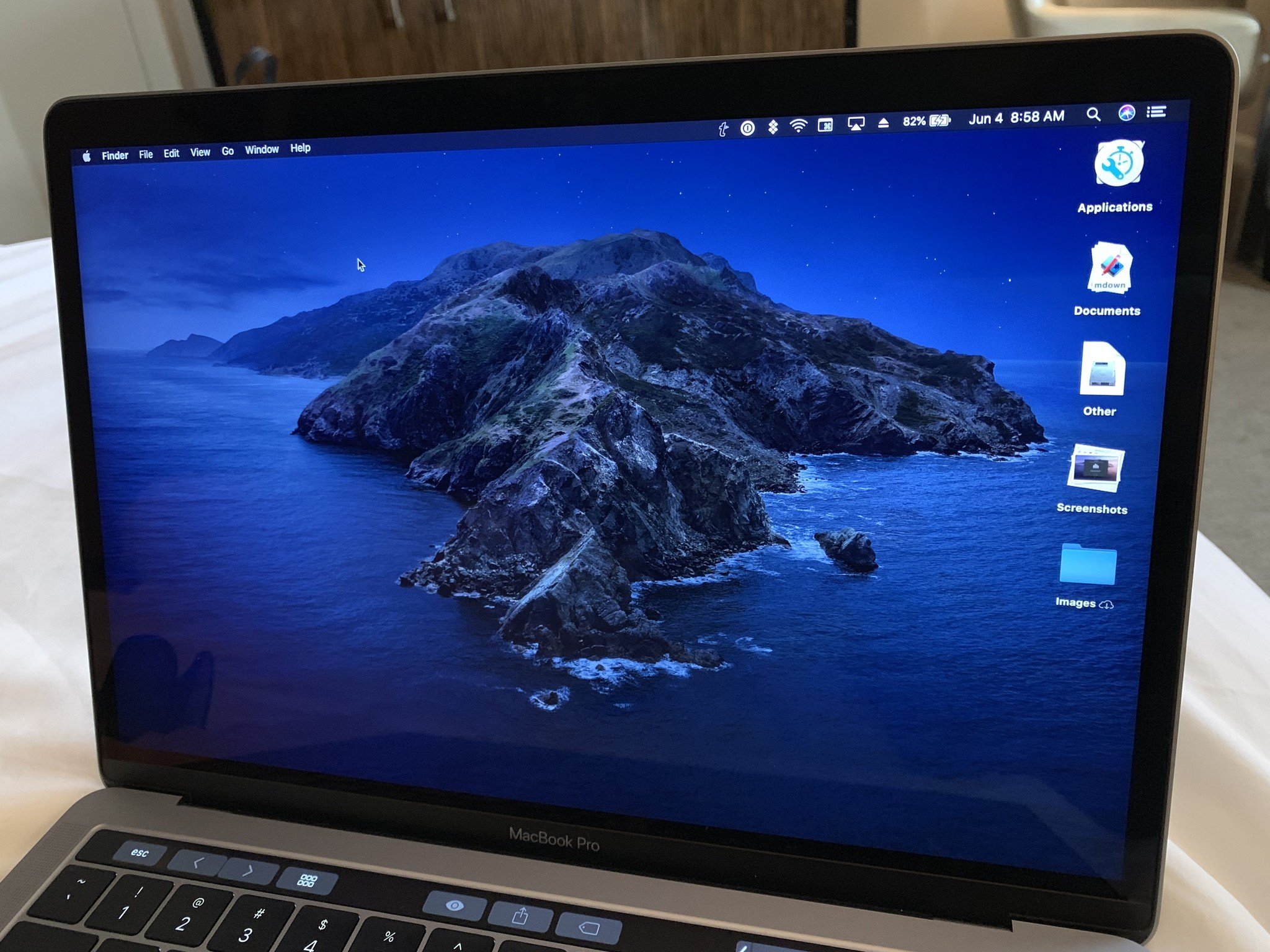Macos Route Different Apps To Different Sound Outputs
- Mar 19, 2014 When you navigate the table of output devices and encouter a device, which the computer is unable to connect to (E.G a bluetooth device, which is not in range,) it pops up a dialog on the screen telling unable to connect to the device blablabla. Now, pressing the topp to the list command obviously doesn't work because the dialog is on the way.
- Aug 28, 2016 I have looked into MIDI setup but that did not work. Of course, simply the Sound Preferences Pane yields no results. Notably, it seems that MacOS thinks the speaker is outputting at a dB that is not accurate to reality. Comparing my internal speaker output at 0 = -63.5dB, the bluetooth speaker at 0 = -96dB. Internal 1 = -47.5dB, bluetooth 1.
- Macos Route Different Apps To Different Sound Outputs System
- Macos Route Different Apps To Different Sound Outputs 2017
- Macos Route Different Apps To Different Sound Outputs Free
It's located in your Applications folder under /Applications/Utilities. Press the + button in the bottom left corner, and press Create Multi-Output Device. Mark to use both your Built-in Output and Soundflower (2ch). Now you can hear audio as usual while routing the Output into your Input via Soundflower.
Macos Route Different Apps To Different Sound Outputs System
You can create Aggregate Device to increase the number audio inputs and outputs available at the same time. You can also use an Aggregate Device if your application doesn't support separate input and output devices.
With Logic Pro, GarageBand, and MainStage, you can use a separate device for input and output. For example, you can use a USB microphone for input and the headphone jack of your Mac for output. Some applications not manufactured by Apple don't support separate input and output devices.
Set up an Aggregate Device
When you create an Aggregate Device, make sure to connect all external audio interfaces first.
- From the Finder, choose Go > Utilities. Open the Audio MIDI Setup application.
- Click the Add (+) button on the bottom-left corner in the Audio Devices window and chose Create Aggregate Device.
- A new Aggregate Device appears in the list on the left side of the window. To rename the device, double-click it.
- With the new Aggregate Device selected, enable the checkbox labeled 'Use' on the left side of the Audio Devices window. Do this for each device you want to include in the Aggregate Device. The order in which you check the boxes determines the order of the inputs and outputs in applications like Logic Pro and MainStage. For example, the first box you checked will be inputs one and two, the second box checked will be three and four, and so on.
The list on the right shows the currently connected audio devices and the number of input and output channels for each one.
- To use the clock of a device as the master clock for all the combined devices, choose the device from the Clock Source menu of the Aggregate Device. Choose the device with the most reliable clock.
- If your audio devices all work with word clock, connect them together using a word clock cable. Connect the cable from the device you designated as Clock Source to the input of each other device. Refer to your audio device product documentation for specific details.
- If any of your devices don't work with word clock, select the Drift Correction checkbox for any devices not designated clock master.

Macos Route Different Apps To Different Sound Outputs 2017
Use an Aggregate Device with Apple music creation software
- Open your application.
- Do the following depending on the application you're using:
- For Logic Pro, choose Logic Pro X > Preferences > Audio, then select Devices.
- For GarageBand, choose GarageBand > Preferences > Audio.
- For MainStage, choose MainStage > Preferences > Audio.
- Choose the Aggregate Device from the Output Device pop-up menu. Logic Pro and GarageBand automatically set the Input Device to the match the selected output device, which you can change if you want to use a different input device. In MainStage, you must manually select the input device.
- In Logic Pro and MainStage, click Apply Changes.
GarageBand automatically switches to the new input device.
Use the Aggregate Device as the sound output of your Mac
When you set the Aggregate Device as the sound output for your Mac, sounds from other apps on your Mac play through the Aggregate Device. The Aggregate Device also becomes the System Setting option in the Output and Input Device menus of your Apple music creation apps.

- From the Finder, choose Go > Utilities. Open Audio MIDI Setup.
- Control-click the Aggregate Device in the left column, then choose 'Use this device for sound output' or 'Use this device for sound input.'
Every Mac can play sound through speakers (built-in or external) or headphones, from making the simplest beeping noise to playing audio CDs like a stereo. Three primary ways to modify the sound on your Mac involve volume, balance, and input/output devices.
Volume: Simply means how loud your Mac plays sound by default. Many applications, such as iTunes, also let you adjust the volume, so you can set the default system volume and then adjust the volume within each application, relative to the system volume, as well.
Balance: Defines how sound plays through the right and left stereo speakers. By adjusting the balance, you can make sound louder coming from one speaker and weaker coming from the other.
Input/output: Depending on your equipment, you might have multiple input and output devices — speakers and headphones as two distinct output devices, for example. By defining which input and output device to use, you can define which one to use by default.
To modify the way your Mac accepts and plays sound, follow these steps:
Macos Route Different Apps To Different Sound Outputs Free
Choose Command→System Preferences and click the Sound icon.
Or, Control-click the System Preferences icon on the Dock and choose Sound from the menu that opens. The Sound preferences pane appears, as shown.
Choose a sound effect.
Click the Sound Effects tab (if it isn’t already selected) and scroll through the list to choose the sound your Mac will play when it needs your attention, such as when you’re quitting an application without saving a document.
(Optional) From the Play Sound Effects Through pop-up menu, choose whether your Mac plays sounds through its built-in Internal Speakers or through another set of speakers you might have connected to your Mac.
(Optional) Drag the Alert Volume slider to the desired location to set how loudly (or softly) your Mac will play the alert when it needs to get your attention.
(Optional) Select (or deselect) either of the following check boxes:
Play User Interface Sound Effects: Lets you hear such sounds as the crinkling of paper when you empty the Trash or a whooshing sound if you remove an icon from the Dock.
Play Feedback When Volume Is Changed: Beeps to match the sound level while you increase or decrease the volume.
(Optional) Drag the Output Volume slider or press the volume-up and volume-down keys on the keyboard.
Output volume defines the maximum volume that sound-playing applications can emit, so if you set Output volume at 75 percent and then play a song in iTunes with the iTunes volume at 50 percent, the song plays at 37.5 percent of the Mac’s maximum output capacity.
(Optional) Select (or deselect) the Show Volume in Menu Bar check box.
When selected, you can see and adjust your Mac’s volume from the menulet in the menu bar.
Menulets are mini menus that open when you click the icons on the right end of the menu bar and give you quick access to specific System Preferences settings, such as Network, Time and Date, or Sound.
Click the Output tab to display the Output preferences pane.
Click the output device you want to use if you have another output option connected to your Mac, such as headphones or external speakers.
Drag the Balance slider to adjust the balance.
Click the Input tab to open the Input preferences pane, as shown in the figure.
Click the input device you want your Mac to use to receive sound.
For instance, you might choose a built-in microphone or the line in port as your input device.
Your Mac may not have a Line In port — the MacBook Air does not.
Drag the Input Volume slider to adjust the default input volume.
Select (or deselect) the Use Ambient Noise Reduction check box to eliminate background noise.
Select this option if you’re recording with the built-in microphone or someone you’re having a FaceTime or Messages voice or video chat with complains that they can’t hear you clearly.
Click the Close button to close the Sound preferences pane when you finish making adjustments. Update mac os x free.
Input preferences let you define how to record sound.
